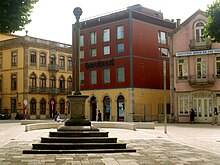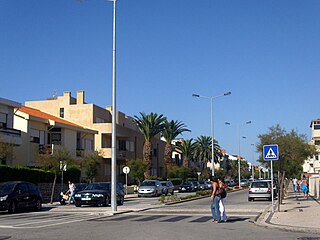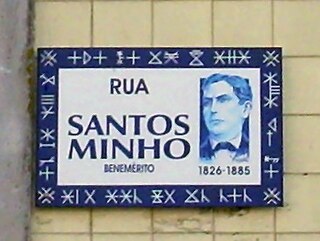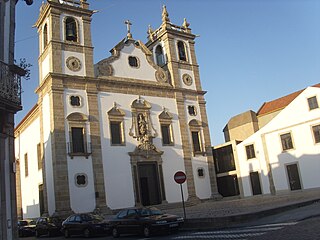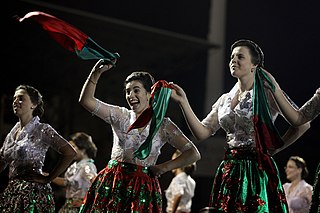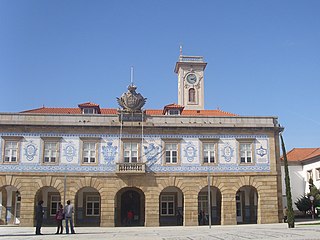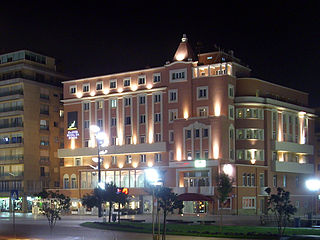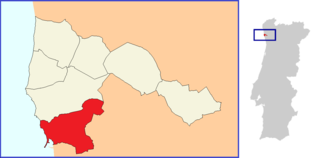
Póvoa de Varzim City Center or Downtown Póvoa de Varzim (Portuguese, Centro) is the heart of Póvoa de Varzim in Portugal, and is the location for most of the city's municipal services, tourist attractions and businesses. It is the center, not only for the city or the municipality, but also neighboring municipalities. The greater downtown area also called "Centro" can also include most districts part of Póvoa de Varzim Parish.
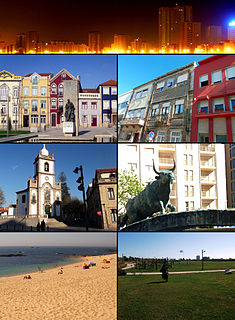
Póvoa de Varzim, also spelled Povoa de Varzim, is a Portuguese city in Northern Portugal and sub-region of Greater Porto. It sits in a sandy coastal plain, a cuspate foreland, halfway between the Minho and Douro rivers. In 2001, there were 63,470 inhabitants, with 42,396 living in the city proper. The city expanded, southwards, to Vila do Conde, and there are about 100,000 inhabitants in the urban area alone. It is the seventh-largest urban agglomeration in Portugal and the third largest in Northern Portugal.

Portugal, officially the Portuguese Republic, is a country located mostly on the Iberian Peninsula in southwestern Europe. It is the westernmost sovereign state of mainland Europe, being bordered to the west and south by the Atlantic Ocean and to the north and east by Spain. Its territory also includes the Atlantic archipelagos of the Azores and Madeira, both autonomous regions with their own regional governments.
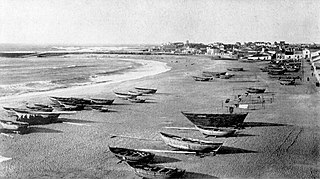
Póvoa de Varzim is a former Portuguese civil parish, located in the city of Póvoa de Varzim. It is the core of the city of Póvoa de Varzim and until the new city limits established in 1995 it was the single parish that made up the city. In the census of 2011, it had a population of 28,420 inhabitants and a total area of 5.25 km². A 2012 law merged the parish with neighbouring Argivai and Beiriz, becoming the southern parish of the city of Póvoa de Varzim, known as União das Freguesias da Póvoa de Varzim, Beiriz e Argivai.
Contents
Downtown, as defined by the City Hall, is arranged around Praça do Almada, the civic center, and extends in all directions for a number of blocks, including Junqueira shopping street, Passeio Alegre waterfront square, Mouzinho de Albuquerque business avenue, and Praça Marquês de Pombal (market square). It does not include the medieval and Discovery Age civic center of the city which is located in Bairro da Matriz district.
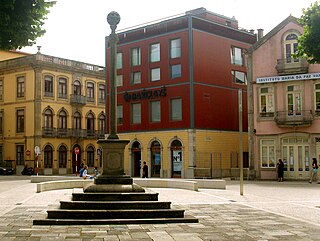
Praça do Almada is the civic center of the city of Póvoa de Varzim in Portugal, and is located in Póvoa de Varzim City Center. It contains the sculpture that pays homage to Eça de Queiroz, a notable writer who was born there.

Rua da Junqueira, mostly known simply as Junqueira, is a traditional shopping street in Póvoa de Varzim in Portugal. The street, located in Póvoa de Varzim City Center, it is the main and the oldest shopping street of the city, with several boutiques, some opened for over 100 years, and small shopping centers. Historic architecture was preserved and it is also the most popular tourist area outside the beach in Póvoa de Varzim, attracting millions of visitors. It is a landmark for the city and neighboring areas.

Passeio Alegre is a square in Póvoa de Varzim City Center in Portugal, and is listed by IGESPAR as an urban site with public relevance.
Despite proven to be occupied at least since the Roman period, Downtown developed its current layout in the 18th century, by royal order of Queen Mary I of Portugal due to the importance that Póvoa de Varzim got as the main seaport in Northern Portugal.





